In 1813, a handful of lightly armed vessels, sent down from defenses at Baltimore, confronted British warships out in the Bay and were cornered here in the Yeocomico. It did not go well.
Morning is clear and warm, with a light steady breeze out of the West. It will be hot today.
Several of the boats are out in the creek already, or working their way downriver. Doug’s new Marsh Cat is not yet finished, so he’s sailing the second Melonseed. From the beach I can see Caesura’s tanbark sail glowing and gliding against the bluegreen treeline in the distance. Then I, too, am off.
Kinsale is an old town, dating from the mid 1600’s. Within a few years of the settlement at Jamestown, a network of English port forts were established around the Chesapeake. Strategically located on deepwater harbors suitable for ocean-going ships, they provided shelter and supplies, and served as trading gateways, collecting taxes as well as shipments of tobacco and timber, all funneling back to Britain. Kinsale was one of those, with a customs house, and warehouses and wharfs, around which a settlement and supporting businesses gathered. In many ways, little has changed since then. A few houses and structures dating from the 1700’s still dot the shoreline, some with small graveyards that go back further.
One such place is called The Great House on the south shore. The original was built in 1667 by a soon-to-be wealthy planter. Rebuilt and expanded over the years, it was shelled by the British in the War of 1812, but survived that and the burning of the town again during the Civil War.
Sailing out the creek in light air, Aeon makes good time. Abreast of Great House Point I pass Kirk with Floyd and Sharon in his newly build 18′ Myst, a sturdy beach yawl designed by Don Kurylko.
As the creek opens out into the Yeocomico River proper – not really a river so much as a series of deep, broad, intersecting coves – I catch up with the others and we all turn downwind toward the Potomac.
At one time, a fleet of 5 schooners hailed from Kinsale, transporting people and goods to other ports around the Bay. During the War of 1812, heavily armed British ships repeatedly shelled and raided these towns all along the shore, including Kinsale. Like many cargo vessels of the time, local schooners were conscripted into military service, fitted with a smattering of guns and sent into battle. A ragtag navy for a ragtag nation that had no navy. Most of the 5 were soon burned or sunk, some of them here in the Yeocomico.
In 1813, a handful of such lightly armed vessels, sent down from defenses at Baltimore, confronted British warships out in the Bay and were cornered here in the Yeocomico. It did not go well. The captain of the Asp was killed in one of the side creeks, and the ship set ablaze. A plaque marks the grave where he’s buried at The Great House. The battle is recounted by the captain of the other ship, the Scorpion, in a letter to the Secretary of the Navy:
The battle occurred here only a few days hence, over 200 years ago. With the shoreline still so empty of civilization, it’s easy to imagine those schooners sailing in and out of the river mouth, and British warships clouding the horizon. Must have been quite a sight.
With winds expected to remain out of the West, and the prospect of a long beat back, we veer off from a course for the Potomac and instead head south on a reach down Lodge Creek. The shoreline here is more settled, with cottages tucked into the trees and working seafood wharfs and a marina at the head of the creek. The larger and faster boats disappear around the bend, but soon return when they run out of wind. Doug and I sail side by side and enjoy the view. A commercial crabber and his wife work the field of pots I’m cruising through. They do donuts around the buoys, looping around them in a large open skiff – pulling, dumping, baiting, and tossing – all before a loop is complete, then arcing off to the next one.
Across the creek approaches what appears to be one of those small four-car ferries that still runs in a few places around the Bay. But it’s part of the Bevans Oyster fleet spreading shell over their commercial beds. It’s an odd looking contraption. The boat itself may well be a decommissioned ferry, but mounted on the deck is what looks like a big manure spreader, the kind I see pulled behind tractors back home. Instead of manure, the wagon is piled with oyster shells, and a conveyor shoots a stream of them out over the bow. Pretty cool. A couple of the guys tack over for a closer look.
Turning back up the river, we cruise past a fine new house built out on a point, clearly designed to emulate colonial plantation houses along the James. Floyd is a reservoir of detailed information about this whole area. Later he tells us that the Bevans family has been quite successful with their oyster aquaculture business, are one of the wealthiest in the region, and confirms the house is theirs.
The Yeocomico is in Westmoreland County, which for such a remote pastural place has spawned a surprising amount of history. Twenty miles west of here is the birthplace of George Washington. An hour’s easy stroll back from there, just 5 files, is Stratford Hall, birthplace of Robert E. Lee. A little nearer still is Nominy Hall, home of Robert Carter III. He was grandson of Robert “King” Carter, an astoundingly wealthy planter and Governor of the Virginia Colony, who by his death had amassed a quarter million acres of land, over 1000 slaves, and 10,000 Pounds of British cash. Robert the Younger, having found a conscience of some note, released all the slaves he inherited in the largest manumission of slaves prior to the civil war, and spent the rest of his life fighting to maintain their freedom through legal actions and diligent documentation.
Seems ironic that these three men, in a country so big, would have lived in such close proximity they were neighbors and could have popped over for tea, had they been contemporaries. In such a small, sparsely populated place, histories of the earlier men would have surely been well known to the latter.
Afternoon is approaching the golden hour by the time we get back. I sail past the beach where the others are hauling out, and drift up the creek to inspect the grain depot. Floyd says the depot is owned by Perdue. In the single barge that fits at the dock, they load locally grown grain, which is then hauled by two small tugs across the Bay to the Eastern Shore, where it is processed into chicken feed for the big poultry operation that sprung up there in recent years. During the winter wheat harvest, just getting started, he says trucks will be backed up from the dock all the way into town, waiting to unload so they can go back for more. Even now four trucks are idling at the landing, and the augers of the silos run 24 hours a day.
Because the harbor is so small, only one end of the barge can be loaded at a time. It tips precariously as the first end fills up. Then the tugs turn the barge around and the other end is filled, leveling out the load. The wind is faint and flukey here between the high banks and trees. The sail flops and jibes from one side to the other, disturbing an Osprey couple who have built their nest on top of the silo, the constant racket of which, oddly, doesn’t seem to bother them.
The grain depot occupies the site of the old steamboat landing. As in Freeport, the steamboats operated on a regular schedule, and provided cheap, reliable, and relatively luxurious travel from these rural enclaves to big cities like Baltimore – far more reliable than any overland travel at the time.
Besides the steamboats, the wharfs were a source of culture and entertainment from the world beyond. The James Adams Floating Theater was a regular summer visitor to Kinsale. It was the original Show Boat, the source and inspiration of the Broadway musical by that name. The James Adams was a specially built 128 foot barge, pulled by a team of tiny tugs like draft horses all over inland waterways of the Mid-Atlantic, from the Sounds of North Carolina throughout coastal Virginia and Maryland. In fact, it was built in the tiny town of Washington, NC, recently visited by Steve Earley on his Spring Sail, and wintered in Elizabeth City for repairs where I met him for an afternoon sail not long ago.
For 10 cents, patrons dressed in their finest could attend performances in a 500 seat theater trimmed in blue and gold. Despite its size, the boat needed only 14 inches of water to float, so could travel up the far reaches of all the tidal creeks to even the smallest of communities for an audience, which it did for more than 20 years until the 1930’s. And this was only one of 53 such show boats that worked the Albemarle and Chesapeake during that period.
The wind finally spent, I drift back to the beach.
It has the makings of another beautiful clear night. Fireflies and whippoorwills and owls. Planets and stars wheel overhead. In the morning, some will leave after breakfast. Others remain for another good day of sailing in a breeze Floyd correctly predicts will come from the east and last all day.
I’ll have to come back for more.


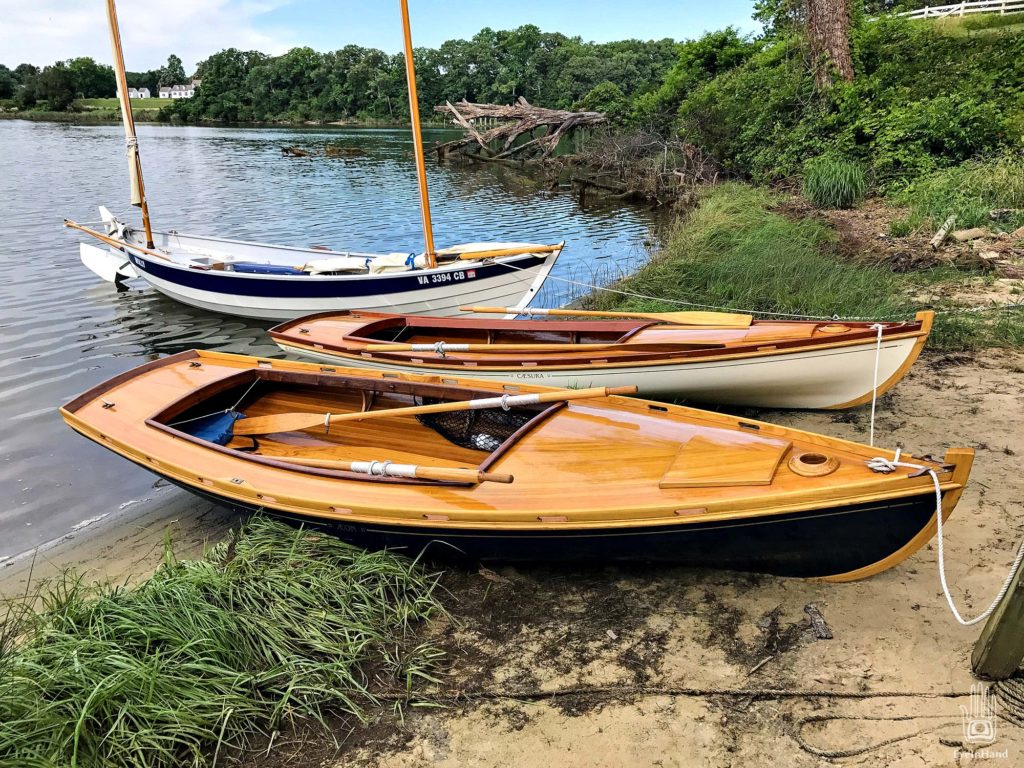




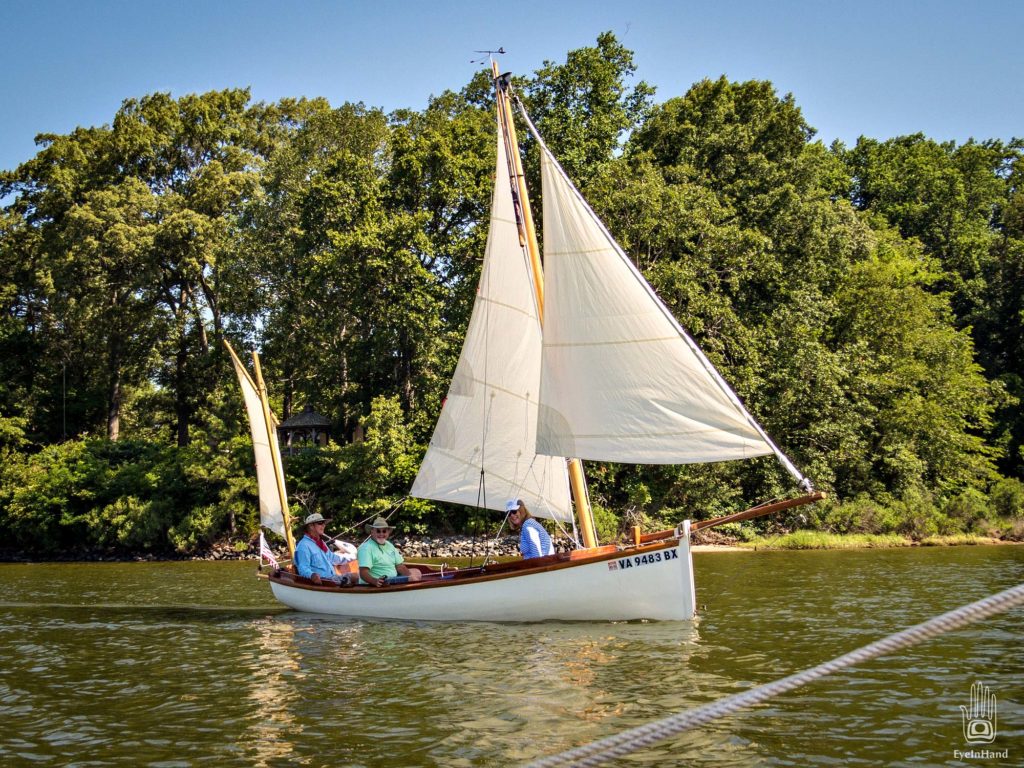

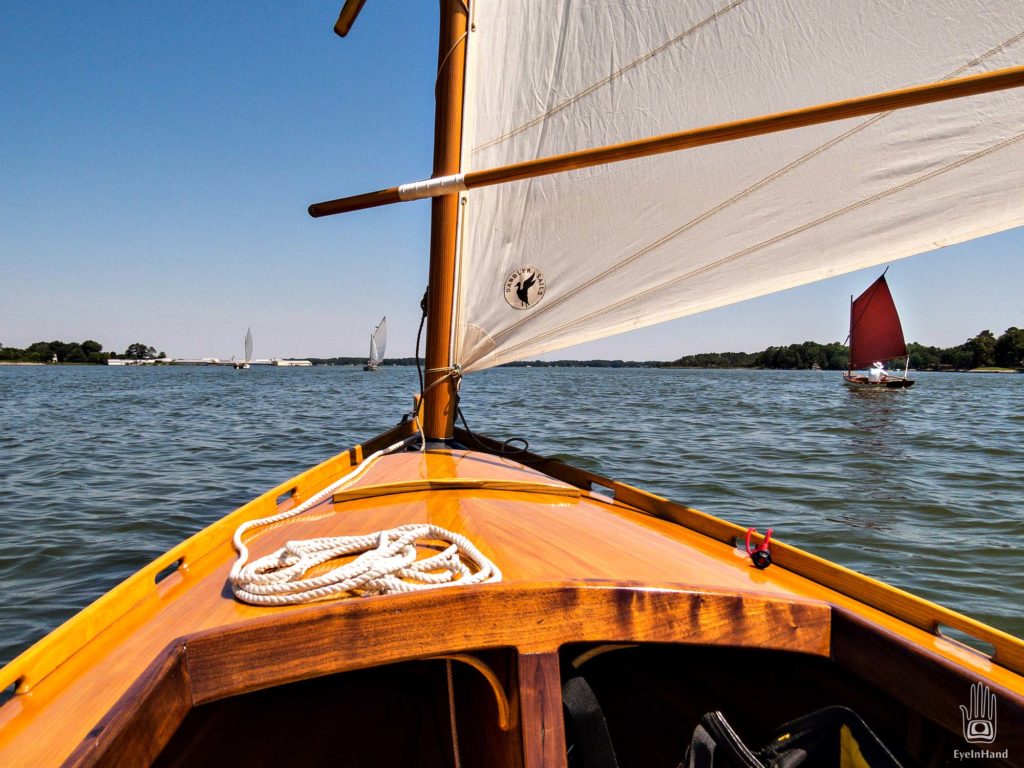
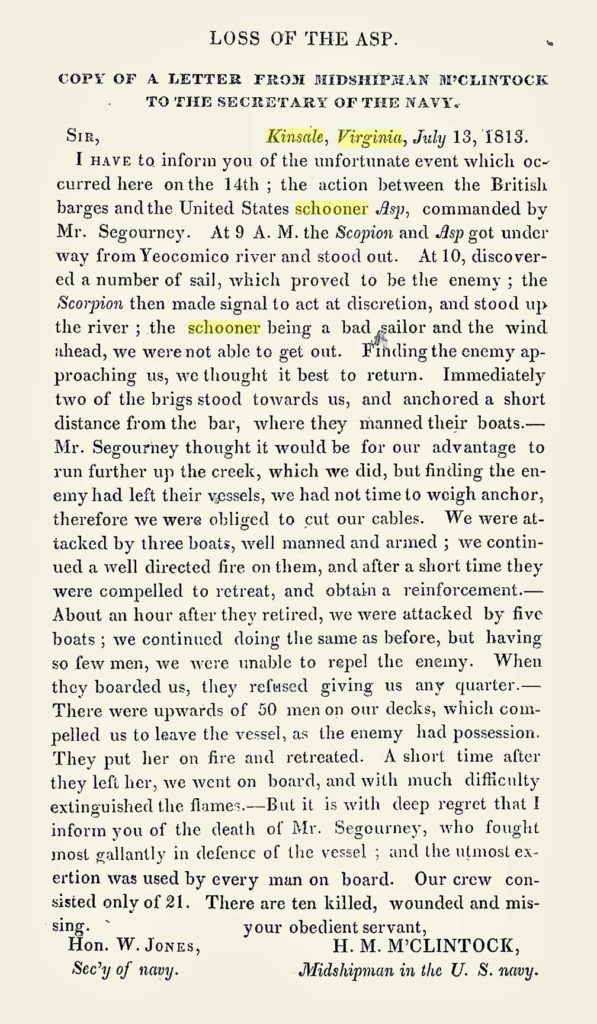
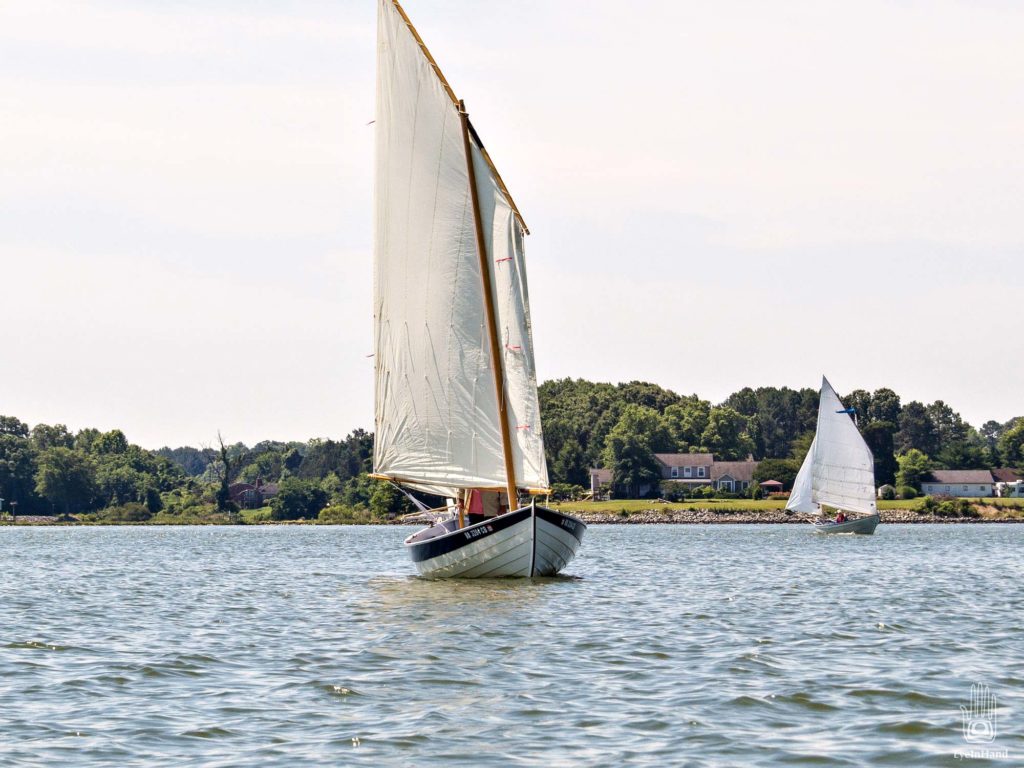


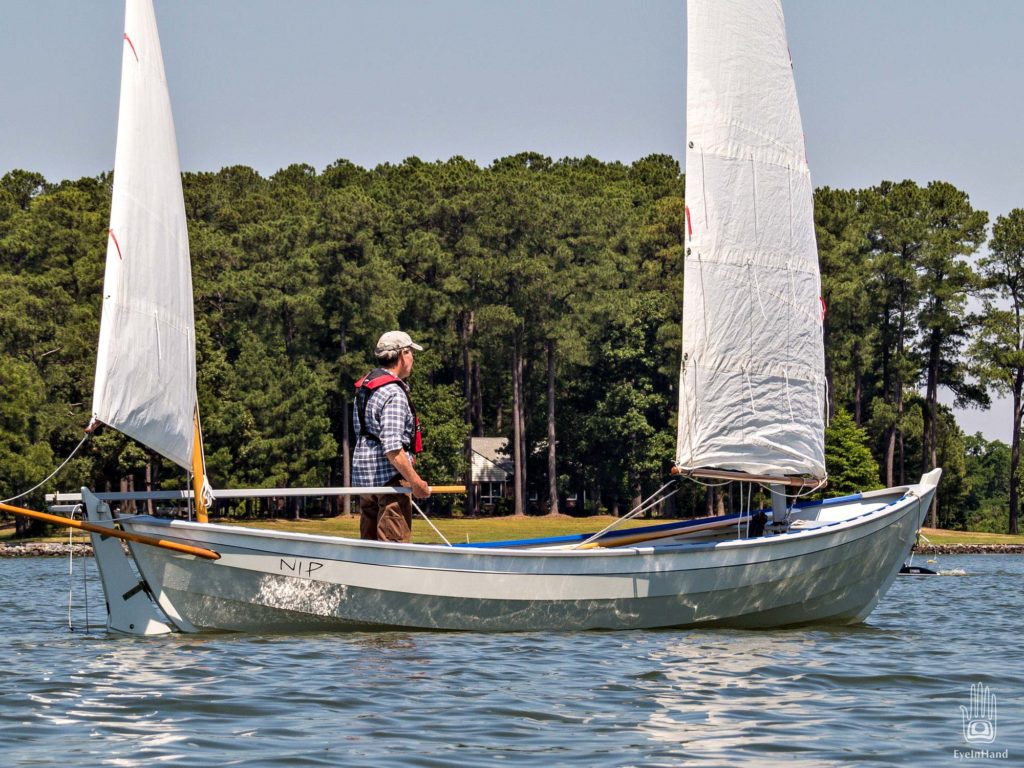

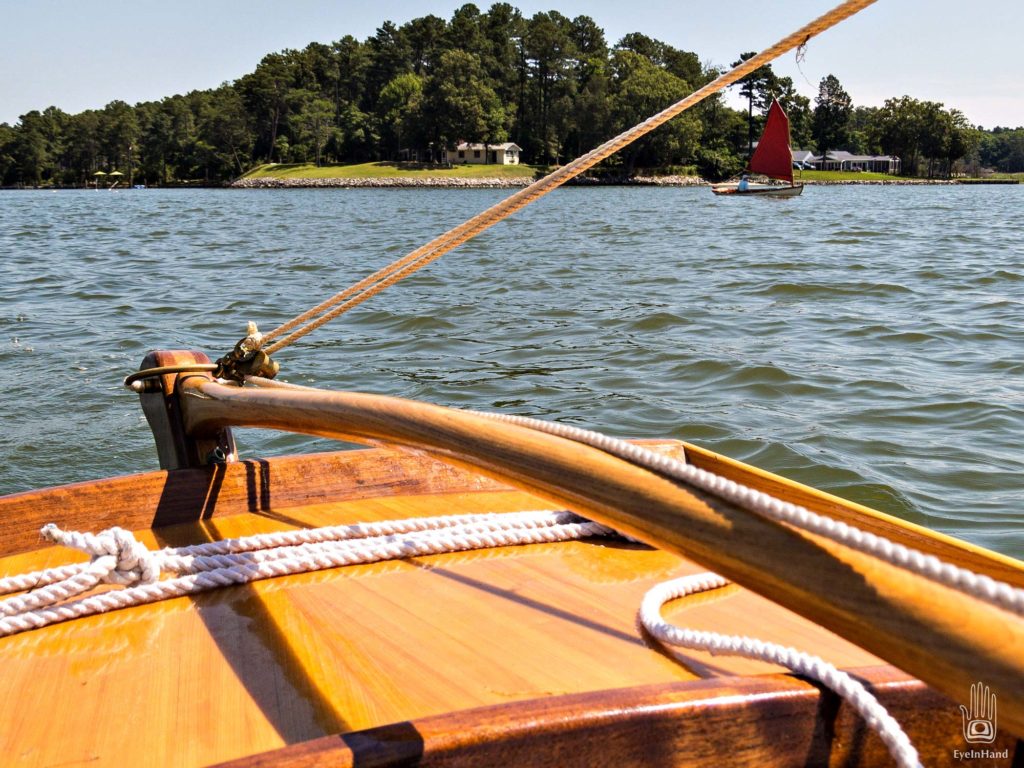
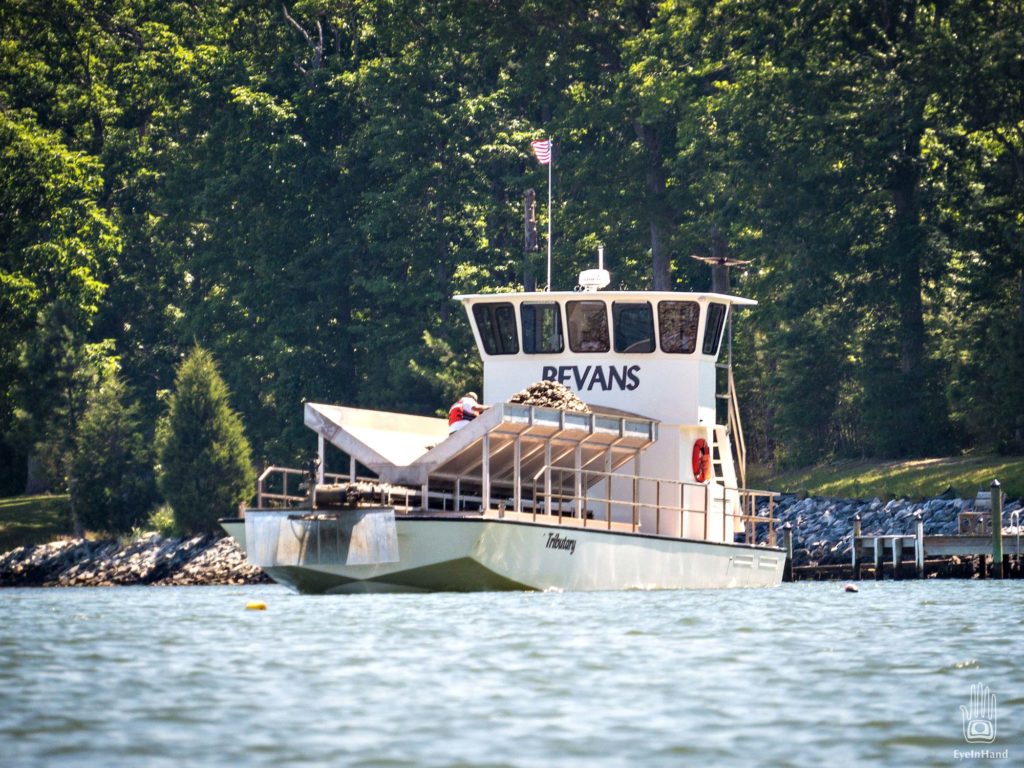
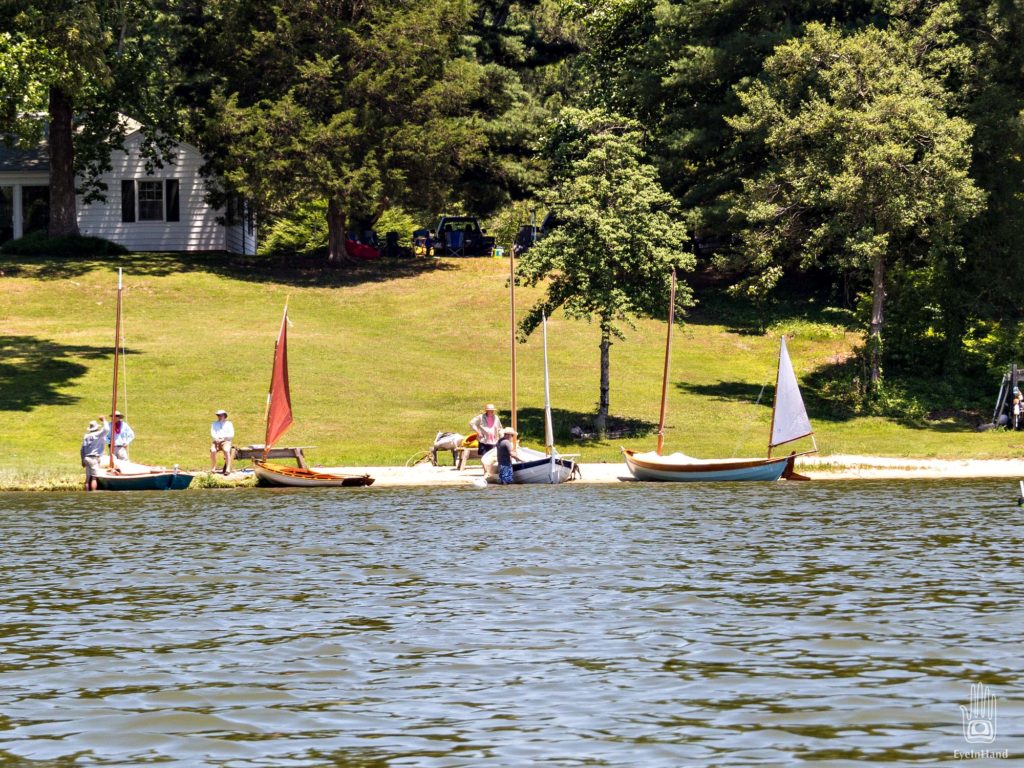
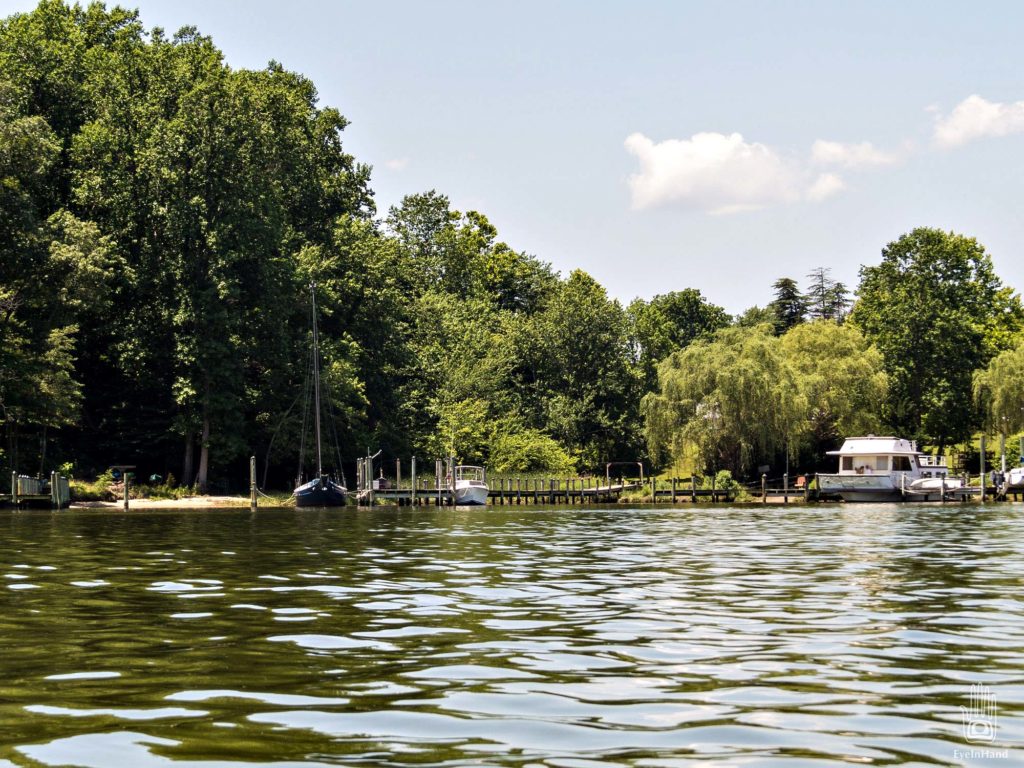
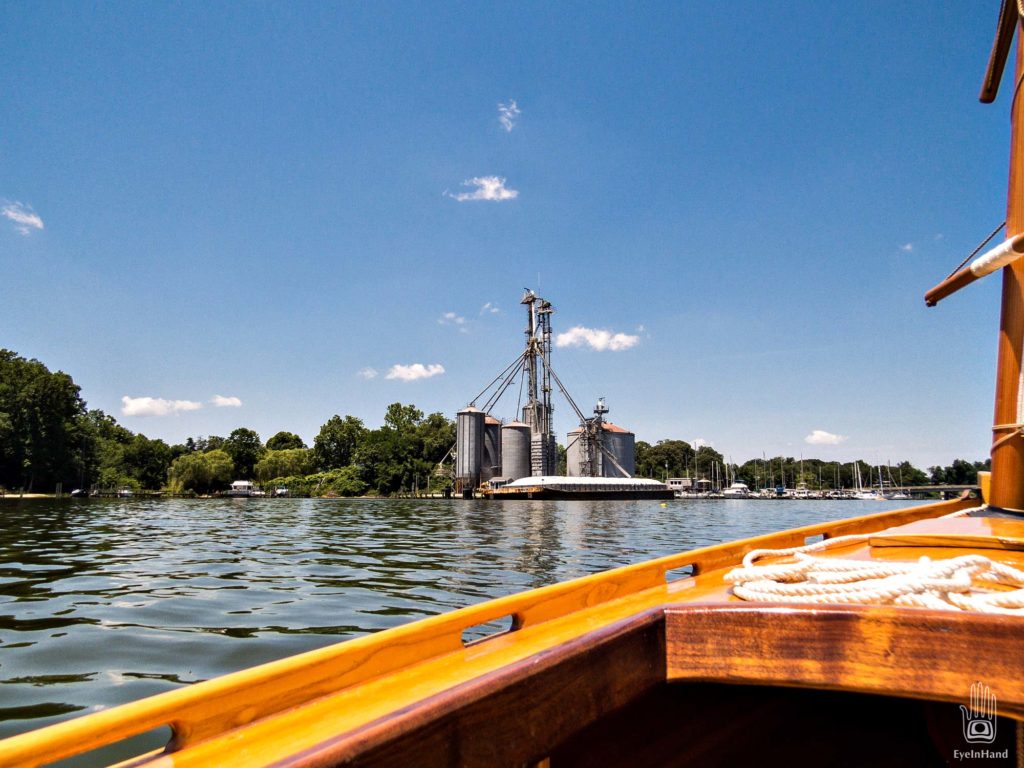
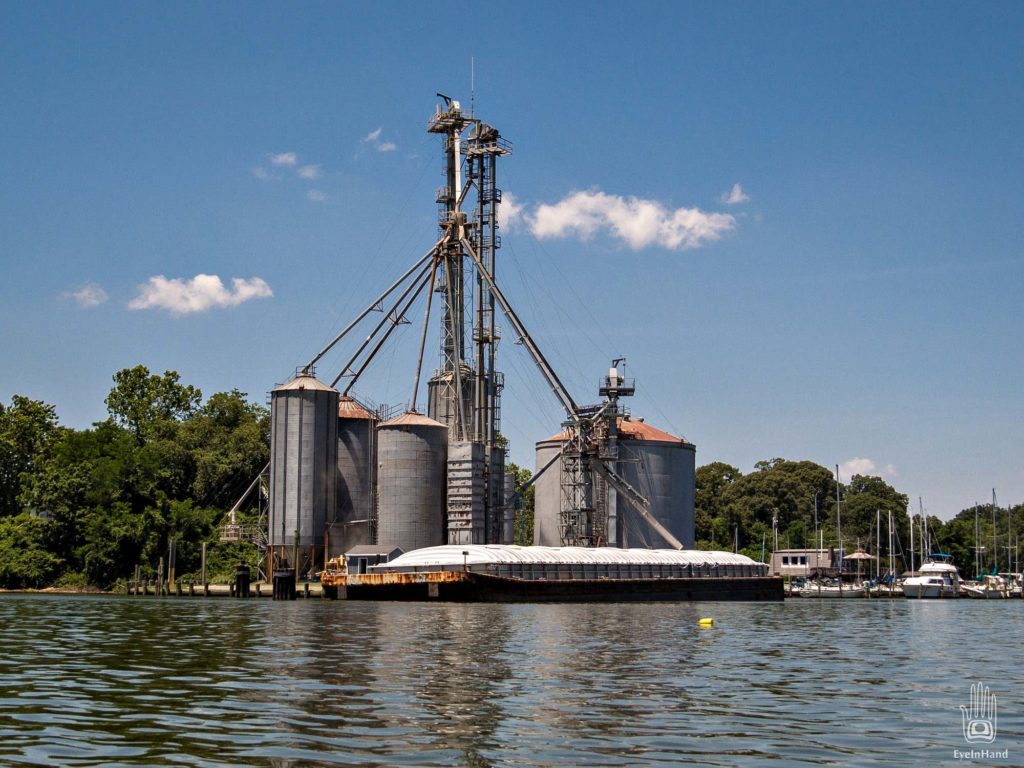
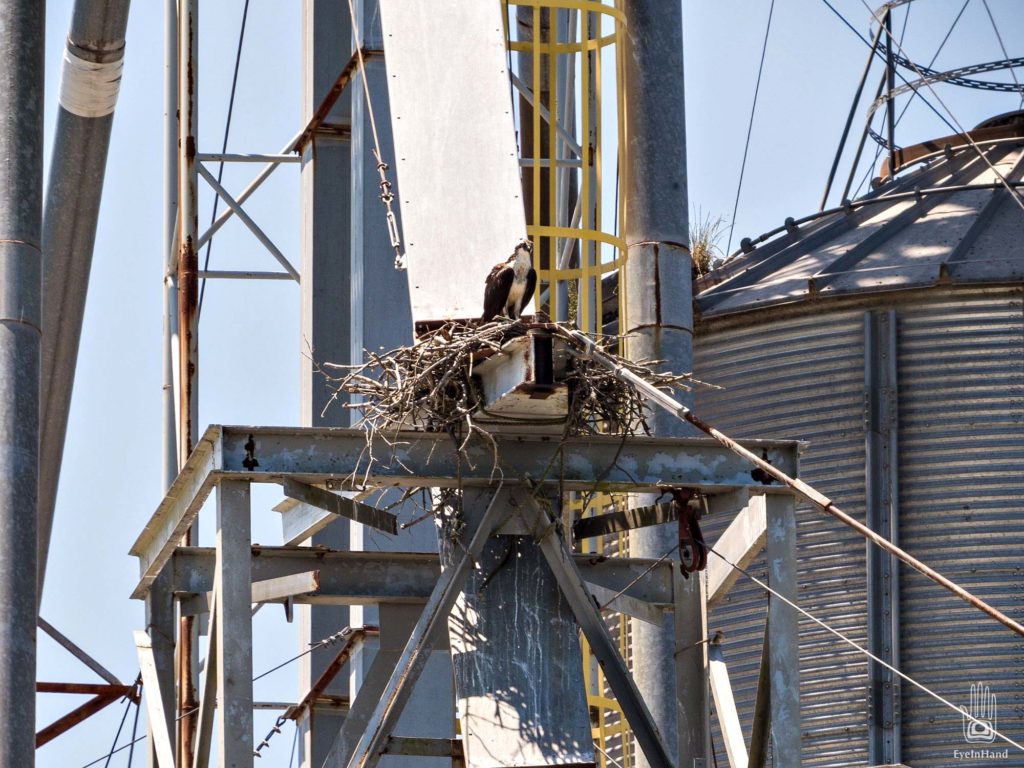
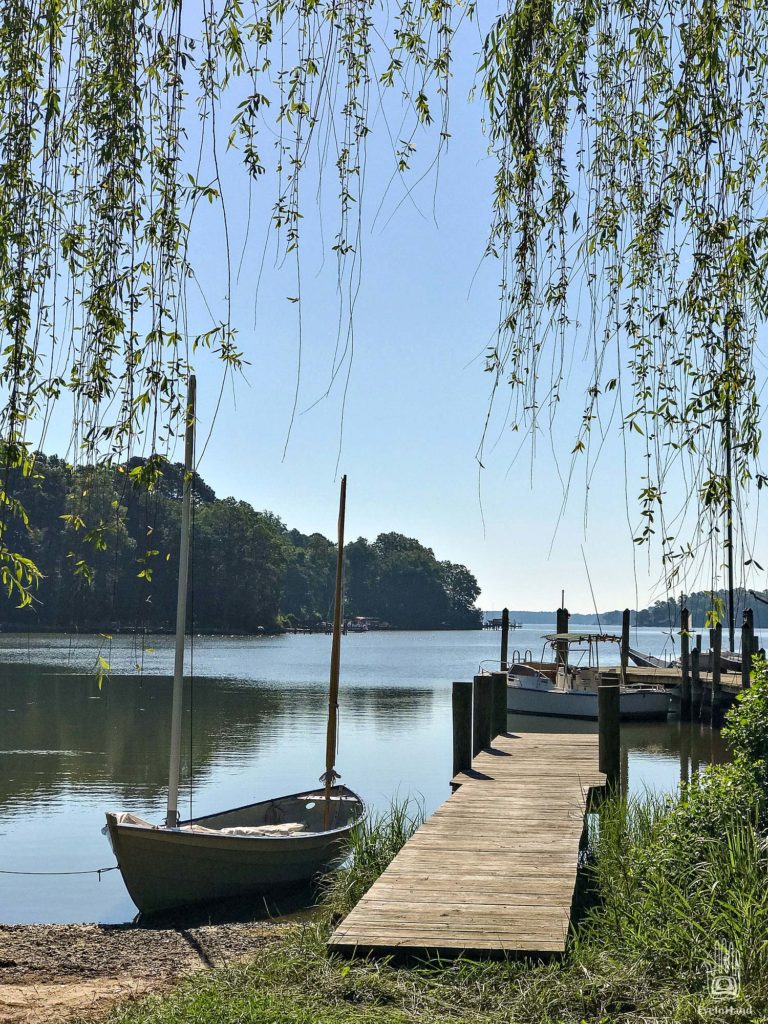
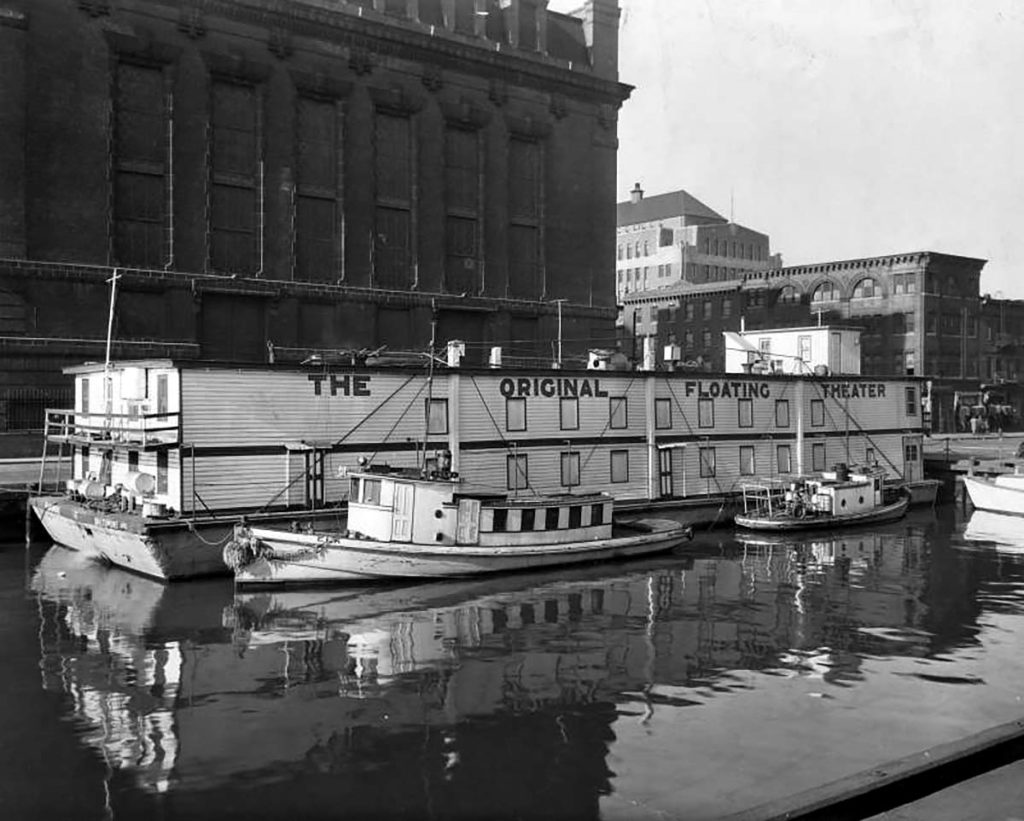

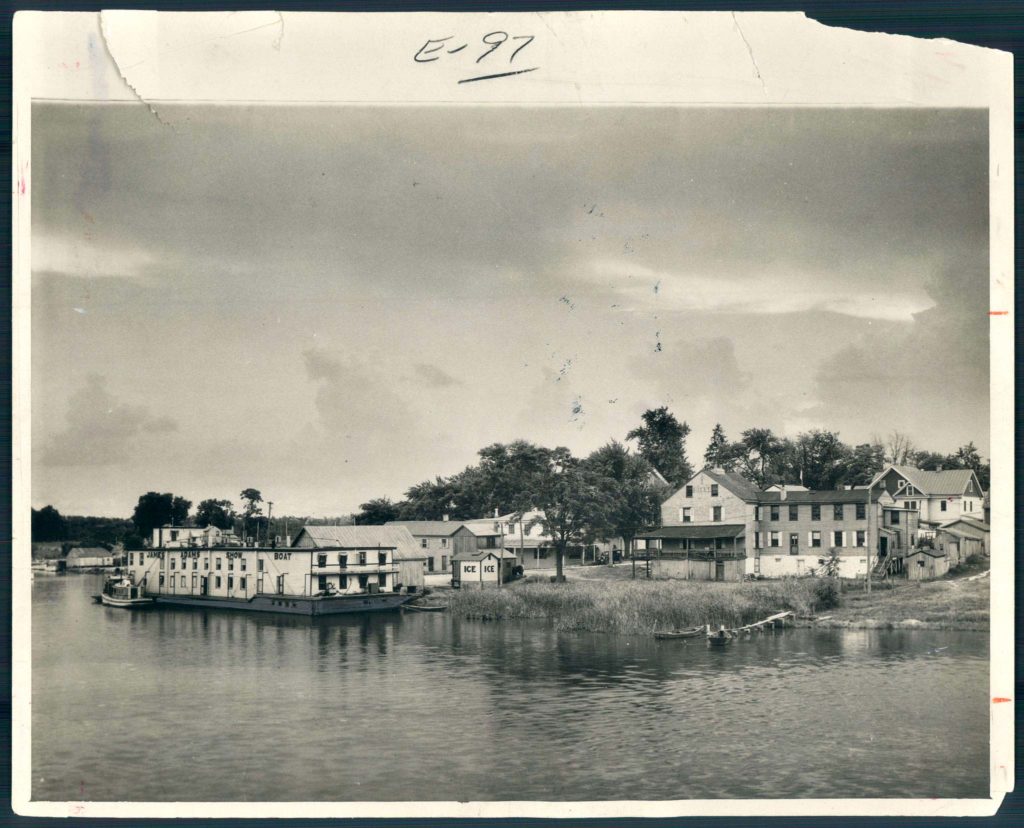
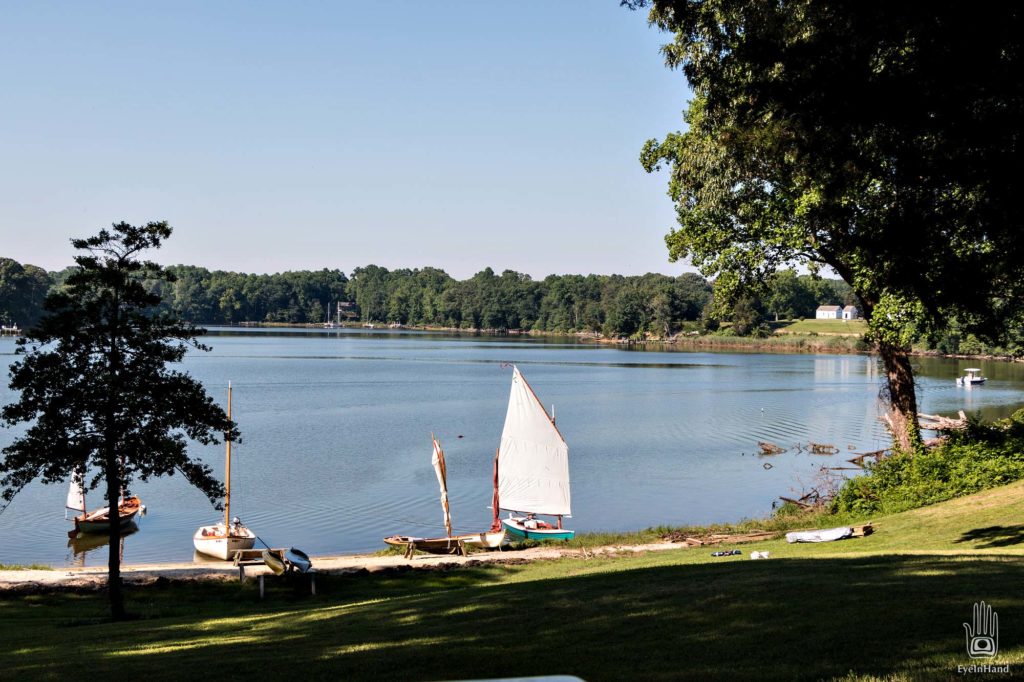
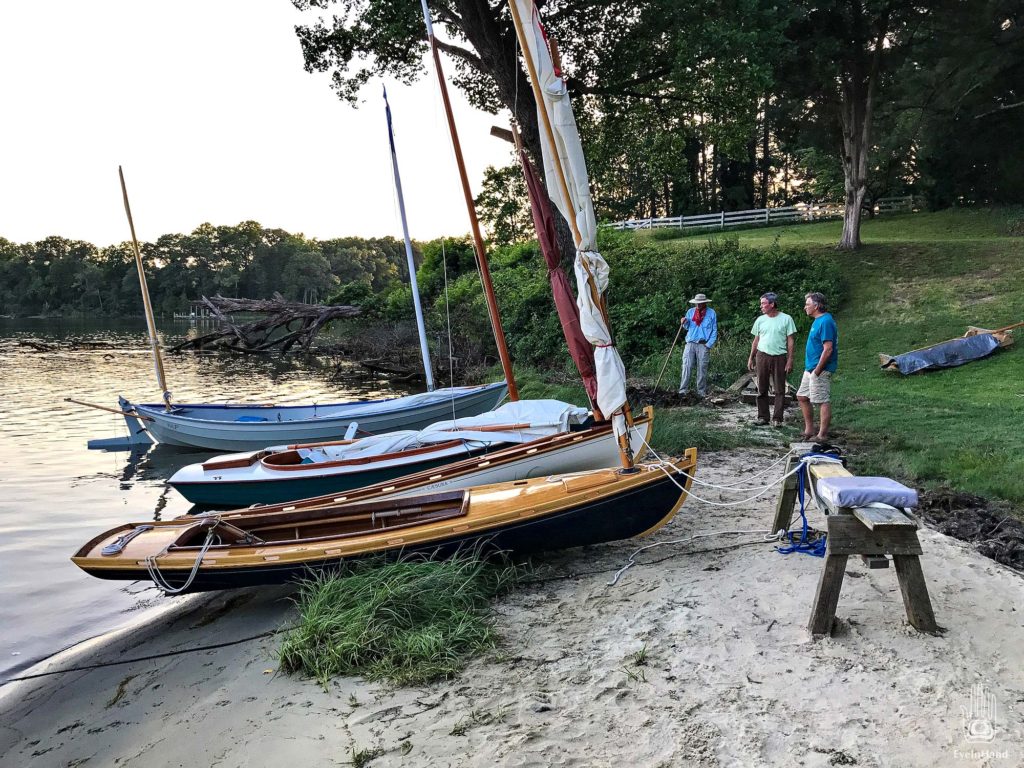
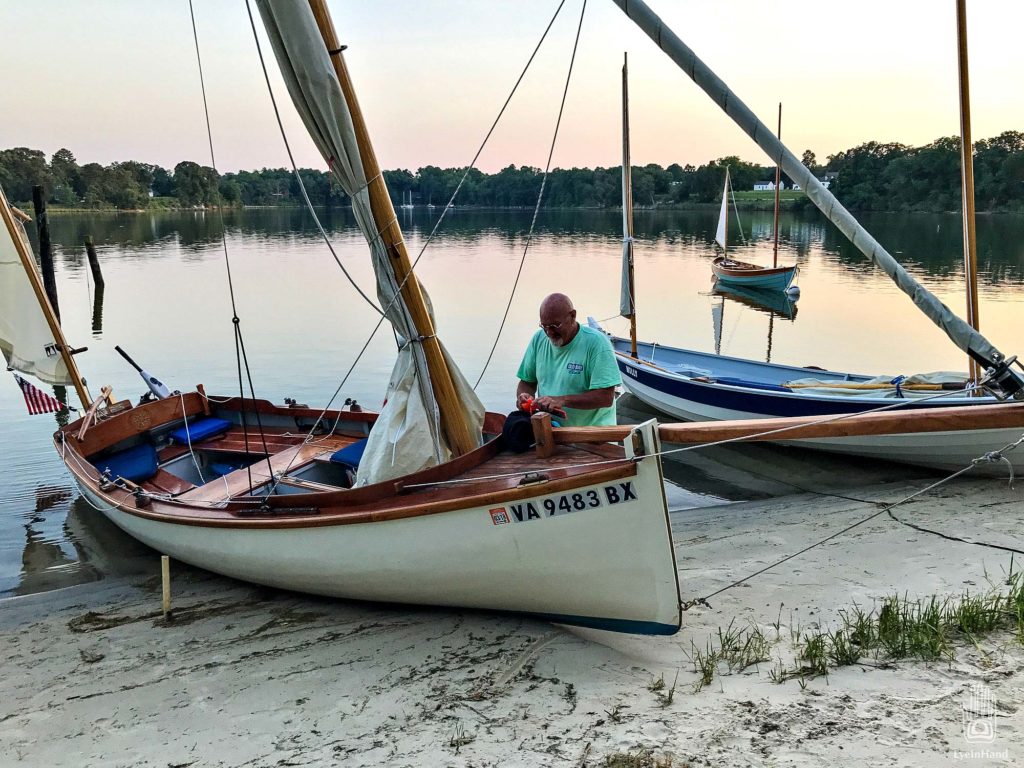
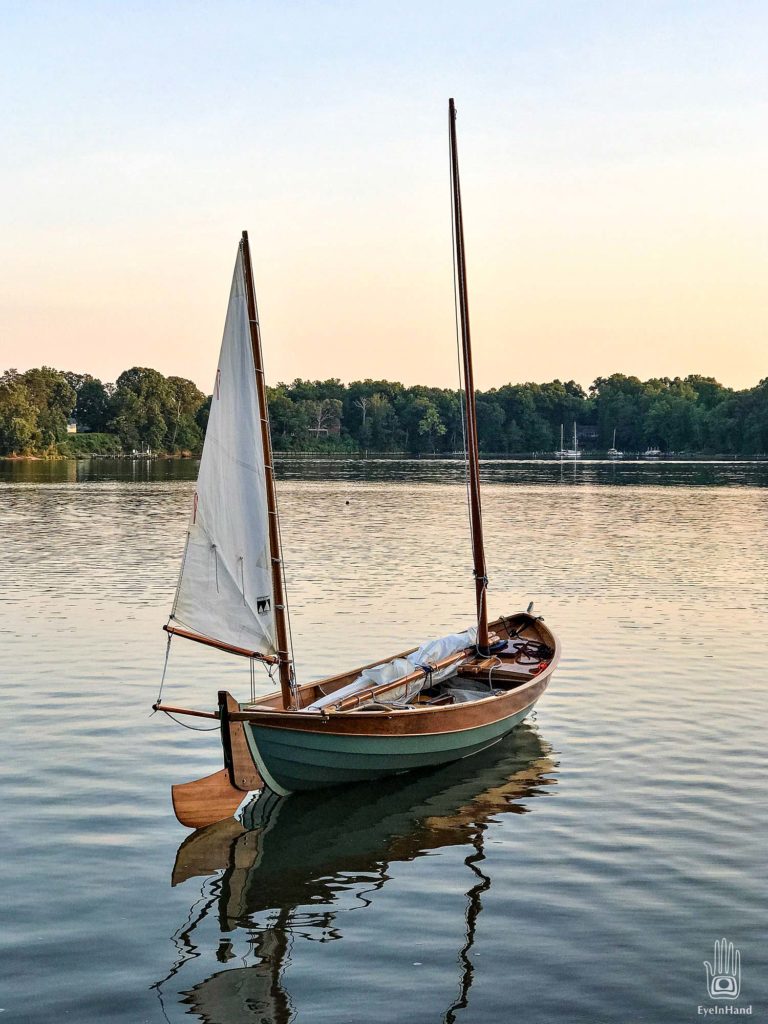
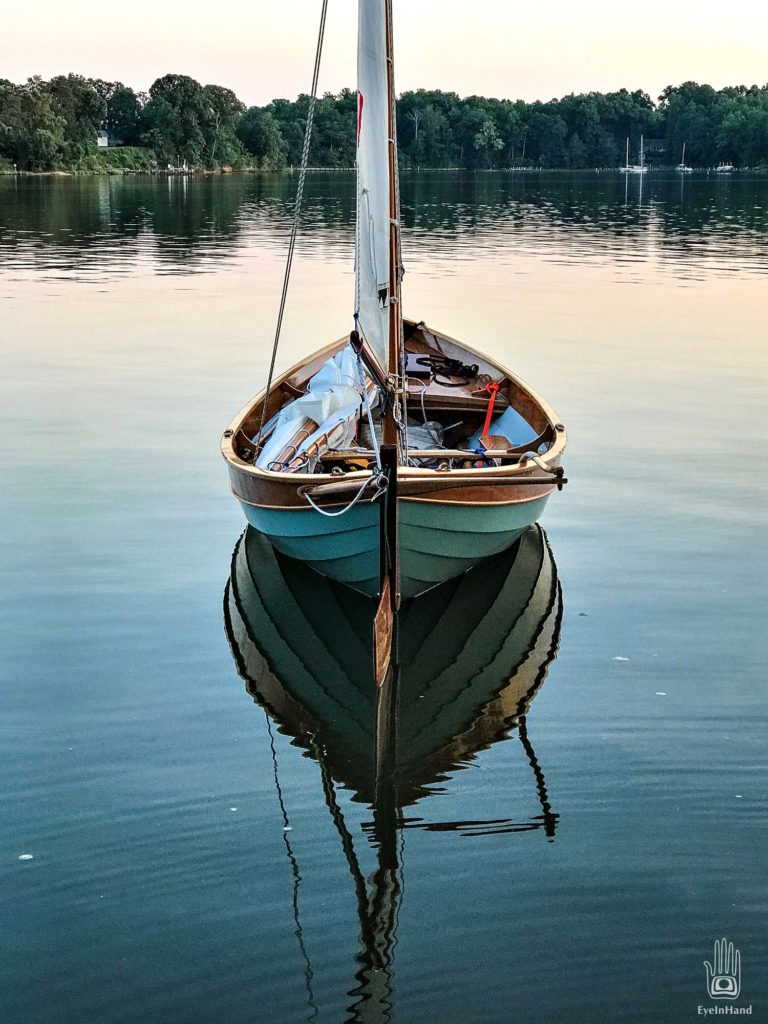


great entry! Let me know when you go back.
Wonderful piece. Indeed, the history of Kinsale and the lower Potomac is very interesting. Thank you.